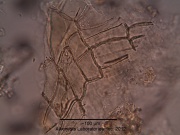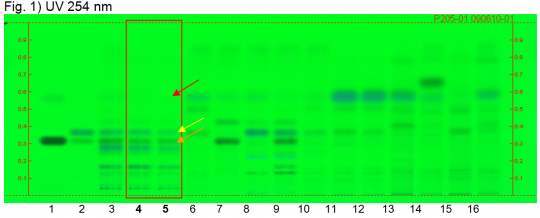Angelica sinensis (root)
Contents |
Introduction
Introduction from Wikipedia, the free encyclopedia (http://en.wikipedia.org/wiki/Angelica_sinensis, retrieved 02/20/2012).
Angelica sinensis, commonly known as "dong quai" or "female ginseng" is a herb from the family Apiaceae, indigenous to China.
Its dried root is commonly known in Chinese as Radix Angelicae Sinensis, or Chinese angelica (simplified Chinese: 当归; traditional Chinese: 當歸; pinyin: dāngguī; Pe̍h-ōe-jī: tong-kui) and is widely used in Chinese traditional medicine to treat gynecological ailments, fatigue, mild anemia and high blood pressure. It has analgesic, anti-inflammatory, antispasmodic and sedative effects. The plant's phytochemicals consist of coumarins, phytosterols, polysaccharides, ferulate, and flavonoids. It has antioxidant activity.
The quoted text in this section was licensed for use under the Creative Commons ShareAlike License, version 3.0: http://creativecommons.org/licenses/by-sa/3.0/
Macroscopic Entries
Microscopic Entries
|
HPTLC Entries
|
Angelica (root) (Angelica archangelica) Lane Assignments Lanes, from left to right (Track, Volume, Sample):
Reference Sample(s) Reference: Dissolve 1 mg each of osthole and imperatorin in 10 mL of methanol. Optional: Dissolve 1 mg of Z-ligustilide in 10 mL of methanol. Stationary Phase Stationary phase, i.e. Silica gel 60, F254 Mobile Phase Toluene, ethyl acetate, glacial acetic acid 90:10:1 (v/v/v) Sample Preparation Method Sample: Mix 1.0 g of powdered sample with 4 mL of heptane and sonicate for 5 minutes, then centrifuge and filter the solutions and use the filtrates as test solutions. Detection Method Saturated chamber; developing distance 70 mm from lower edge; relative humidity 33% Other Notes Images presented in this entry are examples and are not intended to be used as basis for setting specifications for quality control purposes. System suitability test: Imperatorin: greenish fluorescent zone at Rf ~ 0.31 (UV 366 nm). Osthole: blue fluorescent zone at Rf ~ 0.36 (UV 366 nm). Identification: Compare result with reference images. Under UV 254 nm the chromatogram of the test solution shows quenching zones corresponding to references imperatorin and osthole (Rf ~ 0.31 and Rf ~ 0.36, orange and yellow arrow). Below these zones several quenching zones are detected. Under UV 366 nm the chromatogram of the test solution shows a dark blue fluorescent zone corresponding to the reference osthole. Right below a greenish fluorescent zone corresponding to imperatorin is detected. Below this zone several blue fluorescent zones are detected. Test for adulteration: No zone is seen at or directly below Rf ~ 0.57 (red arrow) (Chinese Angelica root, Dahurian Angelica root, Doubleteeth pubescent root, Lovage root, Chinese lovage root). Source: HPTLC Association [2] |
Other Points of Interest
Cite error: <ref> tags exist, but no <references/> tag was found


